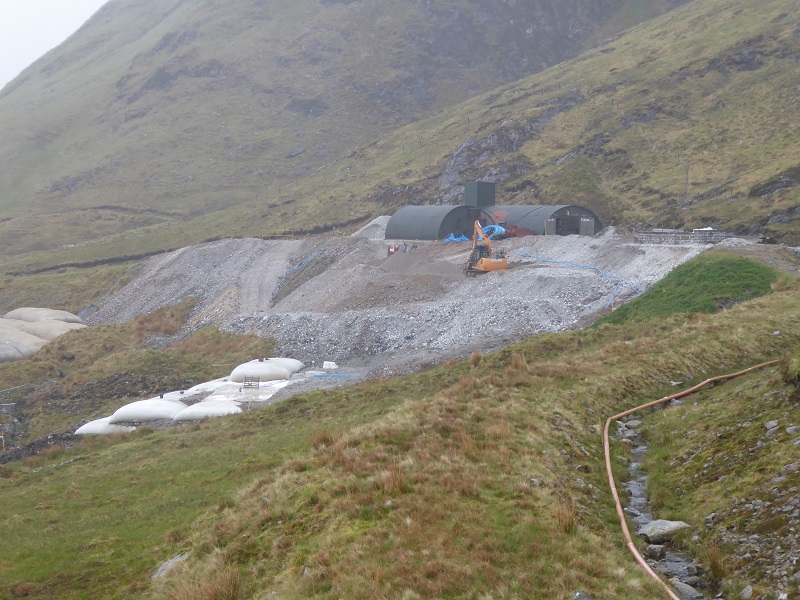
After recent criticisms of SNH on Parkswatch, for example their failure to assess properly the impact of all seven Glen Etive hydro schemes on the landscape (see here), it is a pleasure to report on a consultation which could, if the proposals were widely adopted, make a real difference to landscape protection. The consultation is set out in very dry sounding but short document “Assessing the impact of re-powered windfarms on nature” (“nature” includes “landscape”). The John Muir Trust has done a great job in making more people aware of the document and its implications. Both the consultation and JMT response can be read here.
Wind turbines have only a limited life and many now require to be replaced. Technology has moved on and turbines are now over four or five times the size of what they were. They consequently have far greater impact on natural landscapes and windfarms which were, for example, out of sight of National Scenic Areas and National Parks may, if re-equipped, become highly visible from these areas. That has big implications for the Cairngorms National Park Authority in particular which has taken a strong stance against windfarms within sight of the National Park.
Within this context, SNH is recommending that developers should not just be able to compare any proposals to re-equip a windfarm with what is there now, they need to assess the impact compared to what was there before. Often developments are approved on the argument that because an area already has a development and is therefore spoilt to a degree, its ok to spoil it a bit further. While our National Parks are at present windfarm free, if this approach was adopted by our National Park Authorities and Councils more widely, it could help stop planning creep in the countryside.
The arguments that “it is already spoilt” have been used to justify approvals of development such as hill tracks: “there is a small ATV track already but its caused a bit of damage so just let us put in a bigger track”. The Loch Lomond and Trossachs National Park Authority provided a classic example in their Committee Report which was approved by their Board on the impact of the Cononish gold mine on wild land:
NPA Assessment of Impact on Wild Land
8.30 It is agreed that the effects noted in the LVIA (Landscape Visual Impact Assessment) reflect the likely effects to be experienced from the WLA (Wild Land Area) which is already influenced by the existing mine site and conspicuous agricultural sheds at Cononish Farm.

In effect the LLTNPA argued that because these sheds (there is another set of sheds at Cononish Farm) and mine workings were there already – ignoring an extant planning condition that they should be fully restored – it was fine to build far larger sheds and huge artificial moraines in the Wild Land Area.
If the SNH proposed policy were adopted and applied more widely, it could make a real difference and change the way we think. Consider the hydro schemes on the west side of Glen Etive all of which are to an extent in conifer forestry – although most also will impact on ancient woodland. Many people have accepted that although this is a National Scenic Area because this part of it has been spoilt, a few hydro schemes won’t make it any worse and may in any case be partially concealed by that woodland (until its chopped down). Now consider the difference if we took SNH’s approach and extended it one step further and considered the hydro developments compared to how the glen looked before the conifers were planted. The conifers have distracted people from considering the glen as a whole as was originally intended when it was designated part of the National Scenic Area. We should be removing such distractions from assessments of the impact developments may have on our finest landscapes.
What needs to happen
Anyone who wants stronger protection for the landscape in Scotland should spend 10 minutes responding to the consultation – and you could urge SNH to apply it more widely, to ALL visual impact assessments required under Environmental Impact Assessment in the countryside (only larger and more significant developments).
There is an opportunity for the Cairngorms National Park Authority, which is currently preparing the next stage of its new Local Development Plan consultation, to show a lead on this and incorporate SNH’s proposed methodology into its own policies.

The SNH consultation is a short document which, for once, can be responded to fairly quickly. I’d urge anyone interested to do so. The JMT response is useful for clarifying certain aspects. It’s as well to remember that wind farms were not originally supposed to be permanent features; now we have them as permanent and potentially ever more intrusive. The wind farm operators, needless to say, are in favour of using the existing wind farm landscape as the baseline in repowering applications. If they succeed, things will get much, much worse.